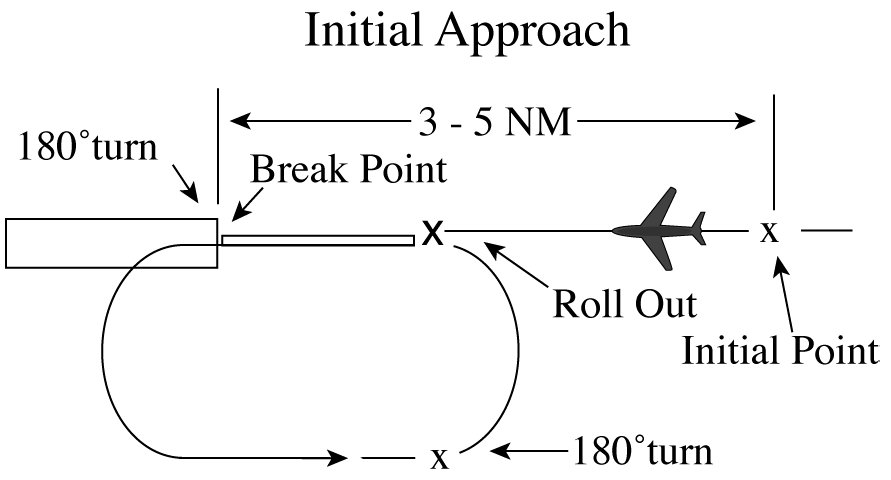Overhead Approach Maneuver
Overhead approach maneuvers permit the expeditious recovery of aircraft, especially in the case of multiple aircraft arriving simultaneously.
Introduction
Introduction
- The overhead approach maneuver is a 180° energy depleting turn used to slow the aircraft in the landing pattern developed at airports where aircraft have an operational need to conduct the maneuver (military, formation flight recovery, etc.)
- Available to pilots operating with an Instrument Flight Rule (IFR) flight plan in Visual Meteorological Conditions (VMC)
Overhead Approach Maneuver
Overhead Approach Maneuver
- An overhead is not an Instrument Approach Procedure (IAP)
- An aircraft conducting an overhead is considered VFR and the IFR plan canceled when at the initial approach portion of the maneuver
- Aircraft operating to an airport without a functioning control tower must initiate cancellation of an IFR flight plan prior to executing the overhead maneuver
- Cancellation of the IFR flight plan must be accomplished after crossing the landing threshold on the initial portion of the maneuver of after landing
Overhead Approach Maneuver Clearance
Overhead Approach Maneuver Clearance
- Controllers may authorize an overhead maneuver and issue the following clearance:
- Pattern altitude and direction of traffic, if either are non-standard
- "Pattern altitude [Altitude]. Right turns"
- Request for a report on an initial
- "Report initial"
- "Break" information and request for a pilot to report the break
- The "Break Point" will be specified if nonstandard
- Pilots may be requested to report "break" if required for traffic or other reasons
- "Break at [Specified Point]"
- "Report break"
Overhead Approach Maneuver Procedure
Overhead Approach Maneuver Procedure
- Performed by adhering to the 1% rule:
- 150 KCAS = 1.5G
- 200 KCAS = 2.0G
- Etc...
- Vary AoB and G to arrive at the appropriate abeam distance
- Never descend in a break until wings level on downwind
Conclusion
Conclusion
- If the maneuver cannot be accommodated, the pilot must be available to fly the conventional rectangular pattern
- To learn more about instrument procedures, be sure to check out the Instrument Procedures Handbook online or in paperback
- Pilots can visit the FAA's Instrument Flight Procedures Information Gateway to review and submit questions related to the how and why certain procedures are as they are
- Still looking for something? Continue searching:
References
References
